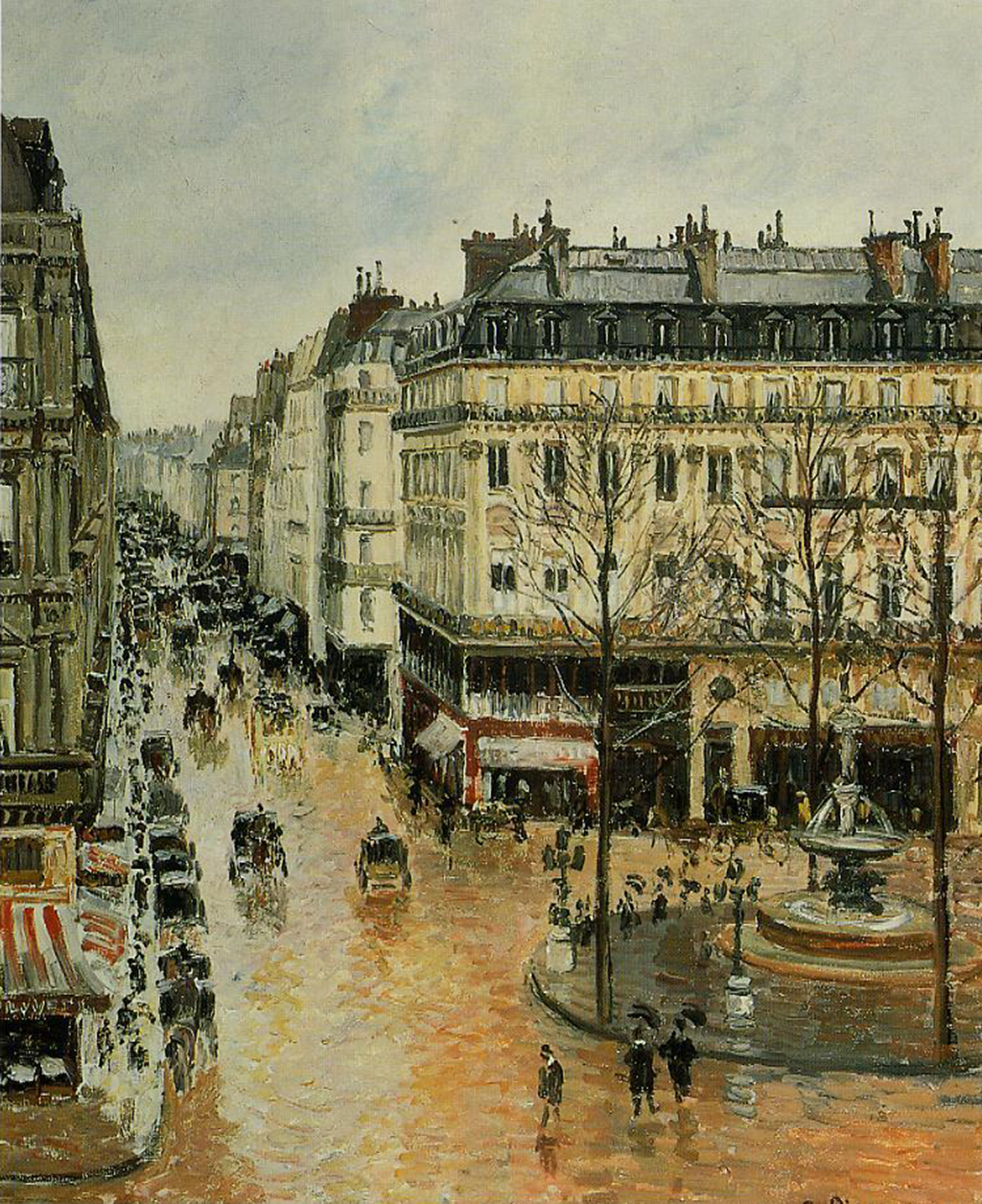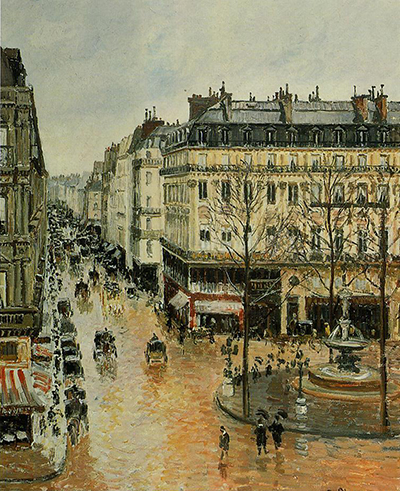This oil on canvas measuring 81 x 65cm was painted in 1897 and is exhibited in Museo Nacional Thyssen-Bornemisza, Madrid. It is one of many paintings by Pissarro painted from the window of his hotel in Place Du Théâtre Français, Paris.
During this period, he often reworked his compositions to reflect different lighting conditions. For example, as well as painting rain effects in the afternoon on Rue Saint-Honore,he also painted the same scene in both the morning and afternoon sun. Like most Impressionists, Pissarro originally painted country landscapes au plein air because of the purity of the light. Following the reconstruction of Paris by Baron Haussmann, the boulevards and spaciousness of the new city became objects of interest to the movement.
The elevated perspective of the piece is not simply an artistic device producing a particular visual effect. It was necessary for Pissarro to paint in-doors at this time in his career because of his vulnerability to repeated eye infections. Because of the focal point of the painting being placed at the end of Rue Saint-Honore, it appears that the artist is viewing the scene from a second- floor apartment. This distancing suggests that the pedestrians, the artist and we, the viewers, share the same ant-like insignificance when confronted by the socio-political monumentalism of the re-constructed Paris. The structured verticals and uniform horizontal lines of the layered apartments disappearing into infinity seem to emphasise this ethos.
The previous paragraph will sound like a bizarre interpretation of Pissarro’s role as a leading impressionist unless we understand that he was banned from the Salon de Paris for using peasants as the subject matter for fine art. He did this purposefully because he was an egalitarian anarchist – he didn’t want to blow up the world, he wanted it to be fairer. Stylistically, Pissarro uses most of the classic Impressionist techniques that he is famed for. He employs short, thick strokes of paint to express spontaneity and movement rather than detail. His thick impasto technique reflects light, and complementary colours are mixed directly onto the canvas ‘wet on wet’ to avoid any hard edges. This is ‘optical mixing’ at it’s most accomplished where the artist uses layers of colours then reveals the colours beneath by hatching, cross-hatching, stippling and scratching into the paint.
In Rue Saint-Honore, Afternoon, Rain Effect, these techniques are exhibited most profoundly by the street almost dissolving/melting into the distance. Similarly, there is a spectacular burst of light in the middle distance presumably created by a carriage navigating a particularly large puddle which caught Pissarro's eye at the exact time of the event. This is one of Pissarro's most infamous paintings because of a prolonged battle over its ownership. Unfortunately, in 1939, the Nazi’s coerced the Jewish owners to part with the painting in return for some money and a visa that saved them from the holocaust. In May 2019, a very convoluted tale resulted in the current situation regarding ownership. Ironically, if the N@zi’s had realised that Camille Pissarro was of Jewish extraction, this work may well have been lost forever.





